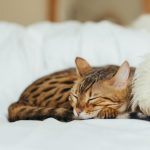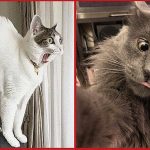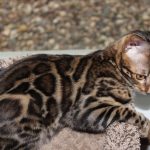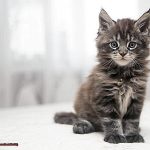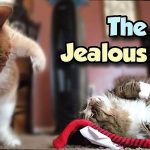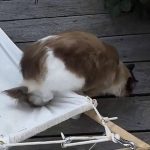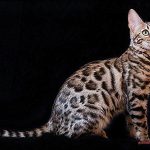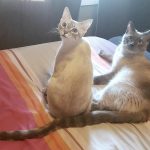Ireland, a land of enchantment and mystery. The birthplace of legends, poetry, and music. But have you ever wondered what the ancient Irish called their feline companions? Cats were more than mere pets to the Celts; they were protectors against evil spirits and pests. In fact, the Irish worshipped a cat goddess named Brigid who embodied fertility, healing, and creativity.
So what is the old Irish word for cat? It’s simply “cat.” The word has its origins in proto-Celtic “kattos,” meaning “to hold.” This makes perfect sense since cats were often kept as beloved household pets and valued for their hunting prowess.
Contrary to popular belief, black cats were not viewed as unlucky in Ireland. Rather, they were symbols of good fortune and prosperity. And while domestic cats were common in households across Ireland, wildcats roaming the countryside held a special place in the hearts of the Irish people.
When visiting Ireland today, keep an eye out for feline motifs in art and folklore. You’ll be amazed at how central these creatures are to Irish culture. So there you have it – “cat” is the old Irish word for cat. But don’t let its simplicity fool you; this feline friend has played a vital role in shaping Irish history and mythology for centuries.
The Value of Cats in Ancient Ireland
Cats were more than just animals in ancient Ireland – they were revered as sacred creatures with magical powers and practical uses. The ancient Irish had a special word for cats – “cat” or “catt” – which comes from the Old Irish word for “wildcat”. This word alone is evidence of the high regard in which cats were held.
One of the practical uses of cats was their hunting skills. They were excellent at keeping the rodent population under control in homes, farms, and even monasteries, where the protection of grain stores from rodents was vital. Cats were also trained for bird hunting, which was a popular pastime among the nobility. Owning a well-trained cat was a sign of status among the aristocracy.
Cats were not only valued for their practical uses but also for their spiritual significance. The goddess Mórrígan, associated with war and sovereignty, was often depicted as a cat or accompanied by cats. Killing a cat was considered a serious offense punishable by law, showing the high esteem in which they were held.
In addition to being useful and sacred creatures, cats were also kept as pets. They were often given as gifts to nobles and treated as members of the family. Some cats were even buried alongside their owners, showing the special bond between humans and cats.
Cats as Sacred Animals in Irish Mythology
Cats have always been an integral part of Irish culture, where they are revered as sacred animals with mystical powers. These fascinating creatures are not just admired for their hunting skills but also respected for their cultural significance.
One of the most famous examples of cats in Irish mythology is the story of the Cat Sith. This enigmatic creature was said to be a fairy that could shape-shift into a witch or demon. Legend has it that the Cat Sith would steal the souls of the dead on Samhain, which is Halloween in modern times. To avoid this fate, people would leave out offerings of milk or food to appease the Cat Sith and distract it from its intended prey.
Another prominent figure in Irish mythology who was often depicted with cats was the goddess Brigid. The two cats by her side were said to possess magical abilities and the power to see into the future. In some versions of the tale, these cats even aided Brigid in creating the world.
Cats were considered symbols of magic, wisdom, and divinity in ancient Ireland. They were held in high esteem and treated with great reverence, with owning a well-trained cat seen as a sign of status among the aristocracy. Killing a cat was considered a severe offense punishable by law in this culture.
The old Irish word for cat is “cat”, still used today, which underscores their deep-rooted importance in Irish culture. Cats played a crucial role in Irish mythology and were viewed as protectors of households and guardians of the spirits.
Killing a Cat: An Offense Punishable by Law
Let’s start with the Brehon Laws. These legal codes, which governed Irish society for over 1,000 years, imposed strict regulations on how cats were to be treated. Killing or harming a cat was considered a severe offense that could result in fines, banishment, or even death. This demonstrates just how much cats were valued in ancient Ireland.
It’s essential to note that the punishment for killing a cat varied based on the cat’s status. The killing of a domestic cat was punished less harshly than the killing of a cat that belonged to a chieftain or other high-ranking individual. This distinction reveals the importance of cats not only as sacred creatures but also as symbols of social status.
Furthermore, cats played a prominent role in Irish mythology and folklore. They were believed to guard homes and protect spirits. Brigid’s magical cats assisted her in creating the world, while the legendary Cat Sith was said to steal souls on Halloween. Cats weren’t just pets; they were thought to possess mystical powers.
Today, we continue to value and safeguard cats through animal cruelty laws. In many countries, including Ireland, killing a cat is still considered an offense punishable by law. We recognize these delightful creatures not only as cherished companions but also as essential members of our society.

In summary, cats have been a vital aspect of Irish culture for centuries and are still highly esteemed today. The Brehon Laws and modern animal cruelty laws reflect their importance. Let us continue to adore and defend these remarkable creatures for generations to come.
Evolution of the Irish Language Over Time
The Irish language, also known as Gaelic, dates back to the 6th century CE when Old Irish was spoken. This early form of Irish had its unique writing system called Ogham. However, the language underwent a significant transformation in the 10th century when Middle Irish emerged.
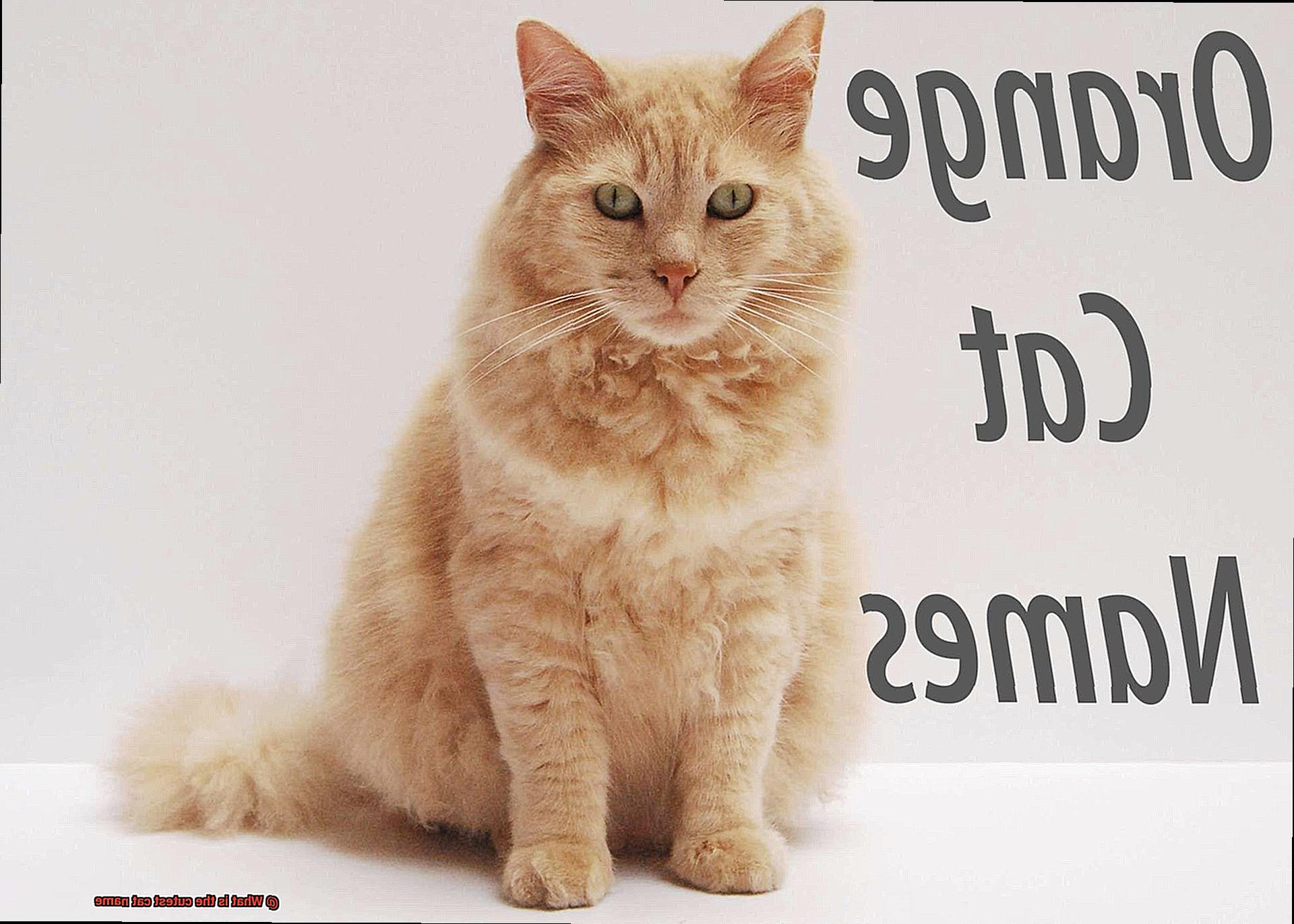
Middle Irish marked a turning point in the evolution of the Irish language. It saw significant changes in grammar, vocabulary, and pronunciation. One of the most significant changes was the influence of Norman French on the Irish language. This resulted in many new loanwords being added to the language. Additionally, Middle Irish saw a shift towards a more flexible word order and a reduction in inflectional endings.
In modern times, we have Modern Irish or “Irish Gaelic.” This is the form of the language that is spoken today. Modern Irish has been heavily influenced by English, with many loanwords from English being incorporated into the language. However, despite these changes over time, the Irish language has managed to maintain its unique character and cultural significance.
It is essential to note that efforts are being made to revive and promote the use of Irish as a living language. Immersion schools, where students are taught exclusively in Irish, and government policies aimed at increasing the use of Irish in everyday life are some initiatives aimed at achieving this objective.
Other Words for Cat in Ancient Ireland
While “cat” or “catag” was the most commonly used word, there were several other terms used to describe cats that have fallen out of use over time.
One such term was “creachan,” which referred to a wild or feral cat. This word likely originated from the Old Irish word “crech,” meaning plunder or raid. It was probably used to describe cats known for their exceptional hunting abilities. Can you imagine the awe and respect these fierce hunters must have commanded?
Another intriguing word used to describe cats in ancient Ireland was “caitín.” This term was used to refer to a kitten or young cat and derived from the Old Irish word “catt,” meaning cat. It’s easy to picture playful, mischievous kittens scampering around ancient Irish homes.
What’s more, there were also regional variations in the words used to describe cats. In some parts of Ulster, people used the term “caiteóg” to refer to a female cat, while in Munster, the term “síogán” was used to describe a male cat. These variations highlight the fascinating diversity of language and culture across ancient Ireland.
The Significance of “Cat” as the Commonly Used Term Today
While its roots can be traced back to the Old English word “catt,” the meaning of “cat” goes far beyond its etymology.
For thousands of years, cats have been domesticated and cherished as pets in households worldwide. According to a survey by the American Pet Products Association, there are approximately 94.2 million cats living in homes across the United States alone. These furry creatures have become more than just pets; they’re beloved members of our families.
But cats are more than just cute and cuddly companions. They’ve also played an important role in popular culture. From Garfield to Hello Kitty, cats have been featured in movies, television shows, books, and even video games. They’ve become symbols of independence, mystery, and cuteness that captivate our hearts.
Cats have also held a special place in various cultures around the world. In ancient Egypt, they were worshipped and considered sacred animals. They were often depicted in artwork and mummified alongside their owners. In Japan, the Maneki-Neko or “beckoning cat” is a common sight at businesses and homes as it is believed to bring good luck. Additionally, in Ireland, cats were associated with witches and were believed to be able to see spirits.
In conclusion, the significance of “cat” as a commonly used term today extends far beyond its origins. It encompasses our love for them as pets, their role in popular culture, and their importance in various cultures around the world. As we continue to share our lives with these fascinating creatures, it’s no wonder that they hold such a special place in our hearts and language.
Cats and Vermin Control in Irish Society
For centuries, cats have played a crucial role in Irish society as vermin controllers. The arrival of the first domesticated cats in Ireland marked their employment as pest control agents, and they have been fulfilling that role ever since. In this post, we will delve into the fascinating history of cats and vermin control in Irish society.
The ancient Celts revered cats and held them in high esteem, often depicting them in their artwork. The traditional Irish word for cat is “cat”, which has remained unchanged for thousands of years. Nevertheless, there are other words for cats in the Irish language, such as “puss”, “cattóg”, and “feilidh”, that are still used today. “Cat” remains the most commonly used term.
In rural areas, cats were indispensable to farmers and households as they kept vermin at bay. They hunted rats, mice, and other small rodents that would otherwise destroy crops and contaminate food stores. Many Irish farmers kept large numbers of cats on their properties for this reason, and it was not uncommon for them to leave out bowls of milk or scraps of food as a reward for their hard-working feline friends.
Cats were equally important in controlling vermin in urban areas. They were employed by merchants to keep pests away from their stores and by households to protect their food supplies. In fact, people often gave cats as gifts to newlyweds or new homeowners as a symbol of good luck and protection from pests.
Cats’ contribution to vermin control in Irish society cannot be overstated. In fact, they earned the respect and admiration of the Irish people for their hard work. Whether you are a cat lover or not, you cannot deny the importance of these furry creatures in keeping pests at bay.
The Goddess Mórrígan and Her Relationship to Cats
This prominent figure, known for her role in war and fate, was often depicted with felines by her side in artwork and literature. But why were these creatures so closely linked to Mórrígan?
One theory suggests that cats were associated with Mórrígan due to their role as protectors of sacred spaces in the Otherworld, which she guarded. Their sharp senses and quick reflexes made them ideal guardians of these sacred spaces. Another theory links Mórrígan to cats due to their shared qualities of independence and cunning, which were highly valued in ancient Celtic society.
Regardless of the reason behind their association, it is clear that Mórrígan and cats were seen as intertwined entities in Celtic culture. Today, those who practice modern forms of Celtic spirituality or neopaganism still honor Mórrígan and her feline companions in their rituals and offerings.
Interestingly, the old Irish word for cat is “cat,” which is still used today. However, other terms like “catt” and “crech” were also used historically, offering a glimpse into the evolution of language and culture over time.
iq6YGYXTykk” >
Conclusion
In conclusion, cats were more than just furry companions to the ancient Irish. They held a sacred and mystical significance that was deeply ingrained in their culture. The old Irish word for cat, “cat,” may seem simple, but its roots in proto-Celtic “kattos” meaning “to hold” reveals the high esteem in which these creatures were held.
Cats played a vital role in shaping Irish history and mythology as protectors against evil spirits and pests. Owning a well-trained cat was a status symbol among the aristocracy, and killing one was considered a grave offense punishable by law. This highlights their importance to Irish society and the respect they commanded.
Today, we continue to honor and protect cats through animal cruelty laws. Killing a cat is still considered an offense punishable by law in many countries, including Ireland.
